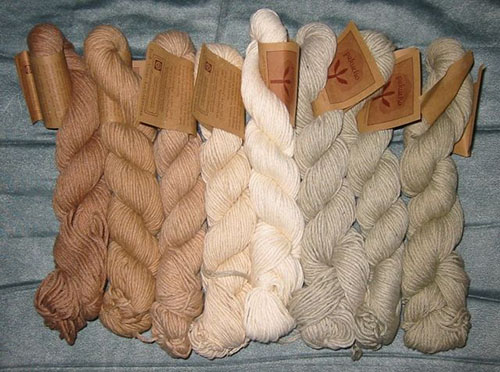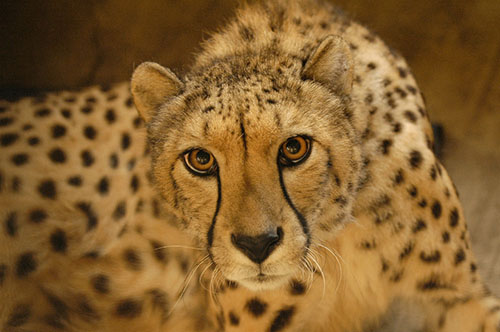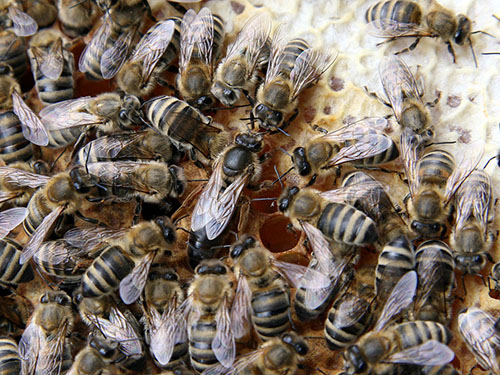Fashionably On Time
Why do I feel so strongly that fashion is a pivotal industry to get right? …it encompasses millions of people from agriculture to the creative marketing and selling. It is also dependent on the animal kingdom and some of the most fragile ecosystems on Earth…
~ Livia Firth, founder of Eco Age Ltd.
Historically, the relationship between fashion and nature has been adversarial – too often the natural world has been mercilessly exploited as a source of raw materials to be used in fashion design. Moreover, large scale manufacturing practices associated with fashion as an industry can result in harm to the environment as a whole. It stands to reason that many people should be skeptical of the idea that fashion can reverse course and assume a more responsible role in maintaining the health of our planet. But as nature itself has demonstrated time and again, things evolve.
Taking Stock


Organic cotton yarn, Pachuko Organic Cotton, 2006.
Photo by Noricum [CC BY-SA 2.0]
During the late 1990s, concern for the environment led many companies within the clothing industry to begin engaging in more sustainable production practices. Consolidated under a new design philosophy known as ecofashion, these practices include the use of properly sourced organic or recycled materials, and the implementation of low-impact manufacturing techniques that conserve water and energy. Ecofashion was inspired by the guiding principle of deep ecology, that nature has an inherent value independent of human wants, needs, or desires. Its deliberate and environmentally conscious approach represents a stark contrast to the conventions of fast fashion, which is characterized by mass production and rampant consumerism.
Speaking Out & Giving Back


Cheetah. Photo by Julie Larsen Maher © WCS.
In addition to mitigating the adverse effects of their own practices, fashion companies are starting to take a proactive role in conserving nature. Fashion can be a powerful medium for activism, and many designers have exploited this fact to call attention to environmental concerns from species conservation to climate change. Rick Owen’s Fall 2016 collection, Mastodon – intended as a commentary on extinction – was influenced in part by the designer’s own “ecological anxiety.” Similarly, Alexander McQueen wrestled with the threat of global warming in his Plato’s Atlantis collection (Spring/Summer 2010).


Queen bee with attendants on a honeycomb (2006).
Photo by Waugsberg.
Some fashion companies have gone a step farther by donating substantial sums of money to fund in situ initiatives. In 2016, French fashion house Hermès partnered with Panthera, the only global conservation organization dedicated exclusively to wild cats, to create the Robert Dallet Initiative for Wild Cat Conservation. This initiative, which aids research and field programs relating to the protection of threatened populations of wild cats, is funded in part by proceeds from the sale of Hermès scarves featuring detailed illustrations of large cats by Robert Dallet. Similarly, J Crew has produced a line of tee-shirts featuring bees and other insects, using 50% of their retail price to support the Xerces Society and Buglife, invertebrate conservation organizations based in the U.S. and the U.K., respectively.
This is Not the End


"A new life begins. Photo by By amenic181 /shutterstock.com"
While the fashion world has made commendable strides toward improving its relationship with nature, as yet there is no definitive solution. There remains a great deal of work to be done to correct hundreds of years of unsustainable practices. However, fashion designers and their companies have taken heartening first steps by recognizing the need for action and implementing the beginnings of change. In 2012, Kering, a global company that owns 16 luxury brands including Alexander McQueen, Gucci, Stella McCartney, and Saint Laurent Paris, enacted a 20-year plan to reduce its greenhouse gas emissions (by 40-50%), and to sustainably source all materials used in the manufacture of its goods. If more large companies follow suit, the best trend in the history of fashion will have been set.







